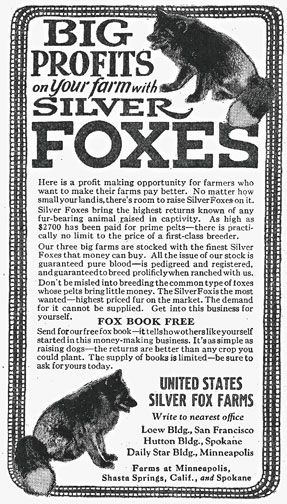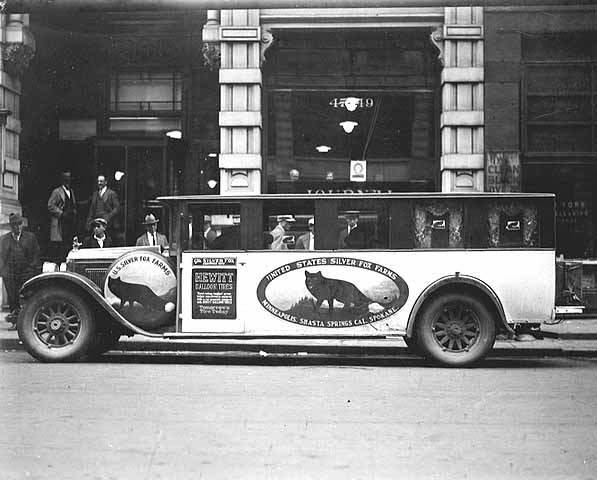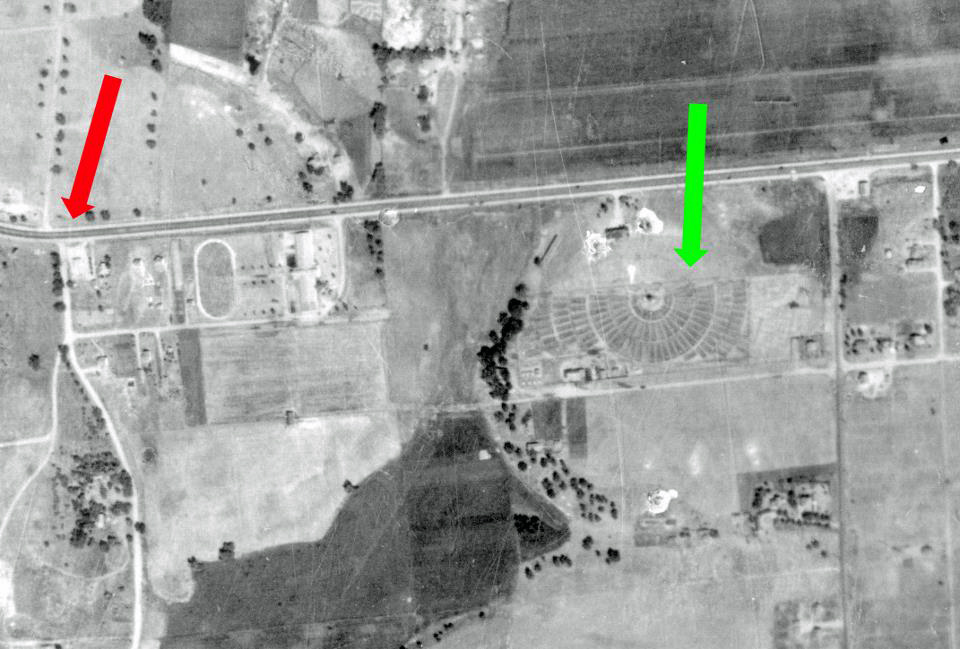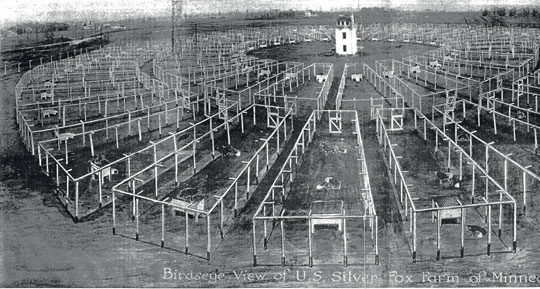The Fox Farm is an intriguing part of St. Louis Park History, but there are many unanswered questions, so we hope you will contact us if you have any clarifications, corrections, or additions.
Be sure to see the fascinating memoir written by the Caretaker’s daughter, Shirley Wanchena.
St. Louis Park was the site of the United States Silver Fox Farm, ” breeders of the Roosevelt Strain of Mormon Fox.” The company, headquartered in Spokane, Washington, also had farms in Seattle and San Francisco.

WAYZATA AND LOUISIANA
-
We definitely know that there was a Fox Farm with the boundaries of Wayzata Blvd., Louisiana Ave., 14th Street, and Pennsylvania Ave. This area involved 19 acres.
-
The 1914 map shows that the southwest corner of Louisiana and Wayzata was owned by Frank A. Turner.
-
The surviving area that is south and east of this area was platted in 1916 and 1917.

-
The 1926 map shows the 19 acres belonged to a George L. Madden, who is not in the 1933 directory.
- A 1928 business directory lists the United States Silver Fox Farm on Superior Blvd.
- In 1930, the American National Fox and Fur Breeders Association issued the fifth edition of its Manual of the Silver Fox Fur Farming Industries. Association Headquarters is listed as 424 McKnight Building, Minneapolis.
-
The 1933 directory (the first one issued) lists United Fur Ranches located at Louisiana and Wayzata Blvd. The farm could be seen from Louisiana, at the top of a hill that sloped up to the south.
-
In the 1934 -1935 and 1935 – 1936 directories, United Fur Ranches is listed at 14th Street and Louisiana.
-
The 1937 directory lists United Fur Ranches at Wayzata and Louisiana, and names Dr. F.S. Swale as the proprietor. He does not appear separately in the directory.

- The undated photo below captioned “A Birdseye View of U.S. Silver Fox Farm of Minneapolis” shows a large circle of pens (with foxes drawn into them) surrounding a three story tower-like building. The tower was a barn where horses were slaughtered. The meat was mixed with grain, and one horse could feed the foxes for ten days to two weeks.
- Village Council minutes show that neighbors on the North Side complained about the fox farm, particularly about the noise from gunshots – not gunshots to kill the foxes, but to kill horses used to feed the foxes. [This is unlikely, says our reliable source – there were very few people living up there, and those who were there did a lot of hunting, so gunshots would have been prevalent.] The Village Council found that the company was committing a nuisance by their slaughtering of animals, and the recorder wrote a letter saying as much. (The foxes themselves were killed by electrocution.) The subsequent ordinance, passed in 1931, provides other hints at the goings-on, by requiring that the animals be property fed and otherwise cared for. More complaints ensued in 1933, and farm owner Mr. Harvey was brought before the Council and promised to move the farm as soon as he could afford to, it being the Depression and all. It was gone by 1939.
- The last listing for United Fur Ranches is in 1938. In 1939 the foxes were moved to a mink ranch off of Hopkins Crossroad, about a mile south of Wayzata Blvd. The Fox Hills neighborhood off of CR 73 is where the mink ranch was.
-
The foxes were moved again, north to Peqot Lakes, in 1940.
-
An aerial photo taken in 1945 shows a set of concentric circles that look very much like the fox pens pictured above. The foxes had been moved by that time, but perhaps it took longer to move or dispose of the infrastructure.
-
Houses on the block were primarily built in the late 1940s and early 1950s.
- Suburban myths remain that the Fox Farm site is haunted. The story goes that there is an eerie light reflecting off of Lamplighter Pond, with the explanation that the light comes from the lamp of the caretaker of the fox farm as he checks on the foxes at night. Uneasy about what he did in life, he was destined to walk the area with his lamp for all eternity. Lamplighter Pond is just south of the Louisiana location described above.
WESTWOOD NATURE CENTER
-
The 1926 plat map shows that the Silver Fox Producer Assn. owned 80 acres, directly north of the Westwood Hills Golf Course, south of Wayzata Blvd.
-
Most of this site is now the northerneastern section of the Westwood Hills Environmental Education Center, which was platted in 1937.
-
A May 1931 Village planning map showed that a Fox Farm was located between Flag and Texas, and Wayzata Blvd. and 15th Street, which would be in the same general area. (There is no 15th Street today.)
-
Northside expert John Yngve swore that there was no fox farm west of Texas.
MINK FARMING
Caught in the crossfire was Harald N. Johnson, who ran a mink ranch on his property. He lived at 4344 Brook Lane, which is a one-block offshoot of Brookside Ave. He came before the Council and was given a waiver of the ordinance for 1931. Johnson was a colorful fellow who told stories of driving a stagecoach out west and in British Columbia. He was a mink farmer, sausage maker at Witt’s Market House, and, in 1935, got a permit to make meat loaf… Johnson’s property went all the way back to Alabama Avenue, which explains why the houses at the end of Alabama are newer than the rest. The mink farm was surrounded by a high sheet metal fence.
MUSKRATS
A curious footnote is that in 1928, a Minneapolis business directory listed the National Muskrat Breeders and the Muskrat Conservation Co.
MORE FOXES
LeRoy deBoom remembered that there was an alley with the perimeters 39th Street, Cambridge, Yosemite, and Wooddale where caged animals – perhaps foxes – were kept. That would have been in the 1940s.

